Table of Content
- Introduction
- Purpose of Non-destructive Testing on Concrete
- Potential Defects in Concrete
- Non-destructive Testing Methods of Concrete
- What are the Different Destructive and Non-destructive Testing Techniques
- Conclusion
Introduction
In the 19th century, when Reinforced Concrete was introduced to the construction industry, it was considered perennial. However, with time it became obvious that, like any other material, concrete deteriorated with time or formed deformities and discontinuities during construction.
Concrete is a fabricated composite material comprised of cement, water, and aggregates (coarse and fine).
During the lay-up of concrete, various structural and surface defects can be formed for reasons like human error, temperature, moisture, raw material quality, etc.
A big challenge faced in conventional methods of Non-destructive Evaluation of in-situ properties of concrete is that it requires causing damage to the material to obtain test specimens.
These test subjects are not available for multiple uses and cannot accurately depict the effects of time, loading, and environment on the structure.
Non-destructive Testing is a technique to ratiocinate the composition and integrity of a material without causing any change in its functionality.
This helps to accurately gauge the service life of a concrete structure and take necessary repair and maintenance measures to ensure safety and performance. Concrete can form cracks, voids, pits, etc.
The composite of the concrete mixture affects the resulting quality of the concrete.
The Strength of the Concrete depends on the quantity of cement in the mix, whereas the ratio of water in the mixture must be carefully adjusted as it can weaken the concrete.
The amount of aggregate can also make the cement mix sticky (higher fine aggregate) or gritty (higher coarse aggregate).
It takes a great deal of experience and training to precisely gauge the results of these NDT Testing Methods, despite the availability of digital, convenient readings, measurement methods, and analysis software.
Purpose of Non-destructive Testing on Concrete
Non-destructive Testing on concrete provides quick, accurate, and accessible results and is used for the following purposes:
* To test multiple locations of a structure, giving an ideal analysis of the effects of loading.
* Permits testing of the structure itself, hence providing the most authentic data.
* To check the extent of the affliction of damages on the structures.
* Helps with in-process monitoring of the integrity of the structure.
* Post-failure assessment (In situations where failure may also be caused due to disasters like fires, earthquakes, etc.)
* To detect the location of voids, fractures, and potential failure points.
* To appraise the overall durability of the structure.
* It is also used to monitor the efficiency of repair processes.
* It is also used to scour points that need reinforcement and structural support.
Potential Defects in Concrete
The construction of the concrete structure is affected by various factors, including the ratios of raw material, processing techniques, environment, machinery used, etc.
The concrete hence obtained can have the following defects:
1. Cracks
These can occur before or after the compaction of concrete.
Cracks from before compaction are further classified into the following:
* Plastic shrinkage cracks
* Plastic Settlement cracks
* Formwork movement cracks
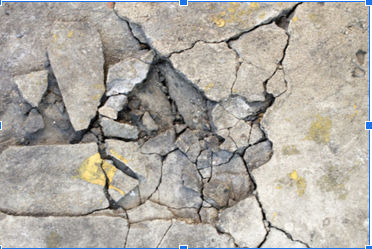
2. Spalling
This is a surface defect that involves the chipping of edges and flaking of the surface of the concrete.
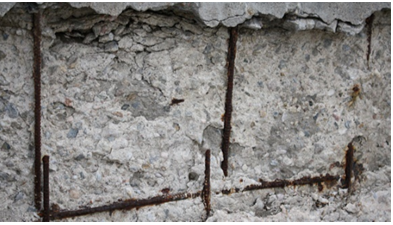
3. Honeycombing
Excess coarse aggregate may cause air gaps and expose the rocky texture of the aggregate within the coin to the surface.
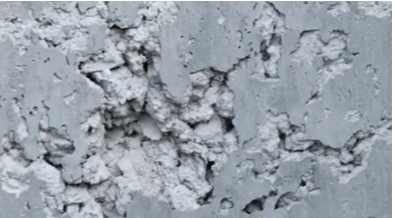
4. Dusting
Also called chalking, this is when the surface of the concrete is porous and appears to slough off in a dust-like manner.
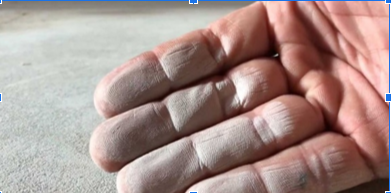
5. Crazing
A defect that appears like hairline cracks; crazing occurs due to excess tension in the concrete caused by humidity and heat.
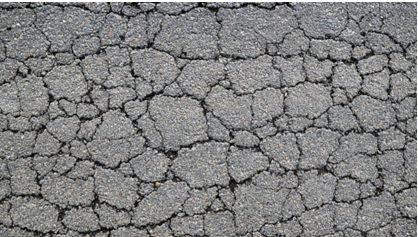
6. Rain Damage
Excess rain can saturate the surface of the concrete. This affects fresh concrete the most and can cause the rain to seep further into the deteriorated zones and cause deeper abrasions.
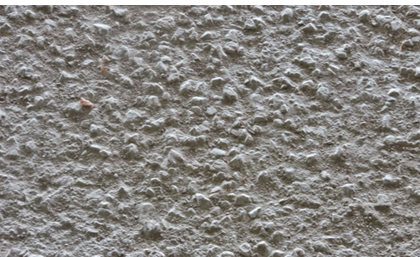
7. Efflorescence
Water-containing minerals percolate through the pores of the concrete to the surface.
The water evaporates, leaving mineral deposits on the surface of the concrete. This is primarily an aesthetic defect.
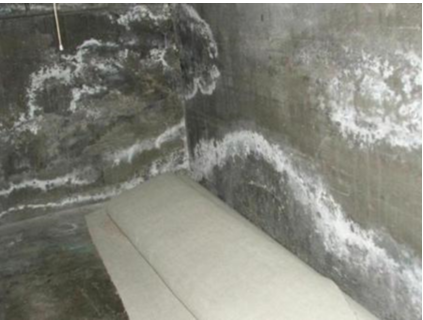
8. Blistering
Early sealing of concrete causes air bubbles to get trapped under the surface of the concrete and appear as blisters on the surface.
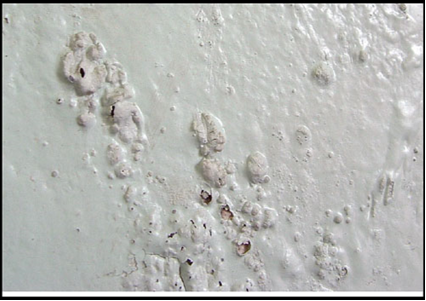
Non-destructive Testing Methods of Concrete
Concrete structures are used for crucial purposes, affecting the life, environment, and vegetation around them.
Non-destructive Techniques are appropriate for this purpose as they do not stall the operation of the structures.
Non-destructive testing techniques provide information on multiple properties of concrete and their variation over time and function.
These properties include surface integrity, ductility, hardness, and yield strength.
Non-destructive testing permits the quantification of these properties without waiting until structural failure.
Non-destructive Testing is also applied mid-construction of such structures to investigate adherence to construction requirements.
The methods that can be applied for Non-destructive Testing on concrete are:
1. Rebound Hammer (Schmidt or Swiss Hammer) Test:
Rebound Hammer Test is an apparatus containing a mass controlled by a spring, which moves along a plunger.
The impacting tip of the rebound hammer is pressed against the surface of the concrete.
The spring gets engaged in pushing against the surface, and the impact energy is measured by the response of the spring in returning to its natural state in the removal of load.
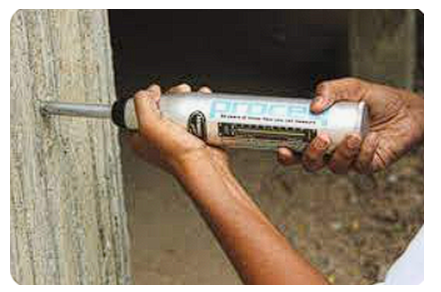
2. Ultrasonic (UPV) Test:
In this non-destructive testing method, an ultrasonic pulse is generated by a transducer and impinged on the surface of the concrete.
The pulses are reflected within the concrete's various defects and structural characteristics.
The Ultrasonic Transducer receives the reflected compression waves. Lower velocity waves are acquired when the input waves are reflected off cracks, voids, and other deformities.
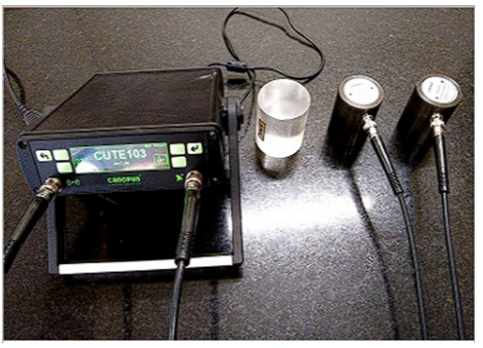
3. Profometer (Rebar Locator) Test:
As the name suggests, the Profometer is used to check for locations of the reinforcement bars and spread of concrete in a structure.
It uses Magnetic Fields to impinge on the concrete system to detect steel used to reinforce the test structure from within.
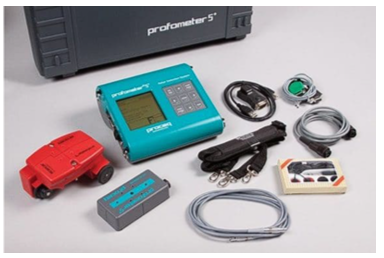
4. Corrosion Analysis Test:
This technique of Non-destructive Testing of concrete aids in foreseeing damage due to corrosion in the steel bars within the concrete.
It records the voltage by dividing the concrete surface into electrical grids and measures voltage a the center.
The voltage hence obtained helps gauge the existence of corrosion damage or the possibility of it in the particular region.
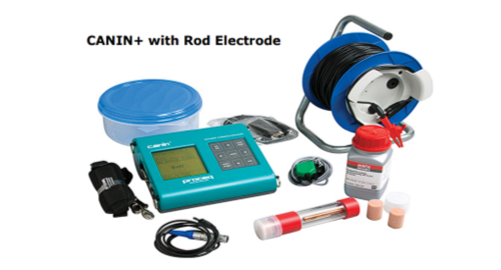
5. Resistivity Meter Test:
The movement of moisture within concrete affects the integrity of a concrete structure.
The resistivity meter test is used to test the permeability of the concrete under study.
The resistivity meter passes electricity through the concrete material.
The more porous the concrete, the more it transmits electric current.
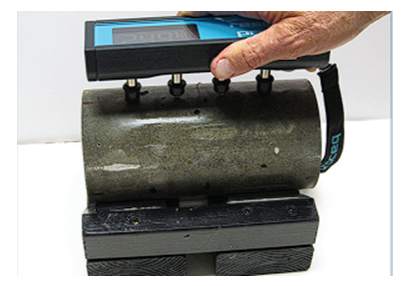
6. Impact Echo Test:
The impact echo test or pulse-echo test provides a short mechanical input on the surface of the concrete test subject.
This is connected to an Ultrasonic Transducer that measures the displacement of the test surface by gauging the stress waves generated.
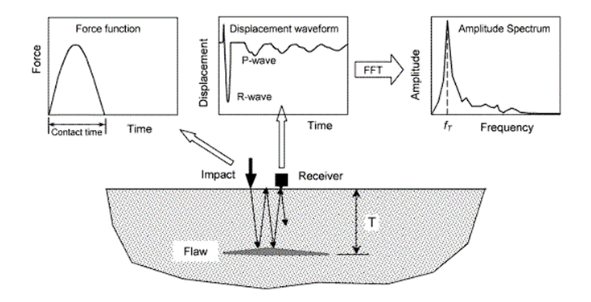
7. Ground Penetrating Radar Test:
A ground penetrating test or a GPR unit consists of a transmitter, a RADAR, a receiver, and data management systems.
This methodology for testing concrete impinges radio waves at high frequencies into the ground.
The receiver henceforth detects fluctuations in the signal, and the data management systems interpret the data.
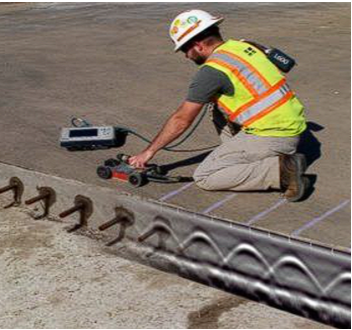
Master the fundamentals of concrete technology - join our webinar to strengthen your knowledge and skills!
What are the Different Destructive and Non-destructive Testing Techniques
Modern technological NDT Methods provide the option of performing Non-destructive and semi-destructive analysis techniques on concrete.
Some of those semi-destructive techniques are:
1. Concrete core cutter:
This tool allows coring out of a sample of the concrete from the structure without ultimately affecting the intended function of the structure.
It consists of a vibrationless drilling unit with diamond bits to ensure the least stress to the structure.
Lubricants can also optimize temperature during the drilling process and wash away debris from the process.
This quick and economical process enables in-laboratory testing to obtain accurate results.
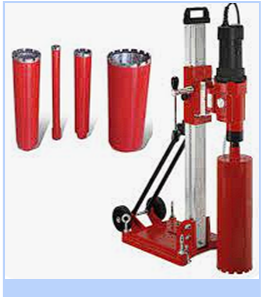
2. Capo Test:
A hole is drilled into the concrete structure under testing. Another tool with a broader head is inserted and held in place within the drilled hole.
The concrete with the comprehensive head tool is then ‘pulled out’ of the structure.
The Capo test apparatus measures the force required to do so.
A pre-set calibration chart is used to gauge the strength of the test subject against the force value obtained in the capo test.
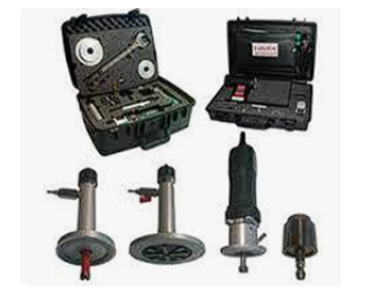
3. Windsor Probe Test:
This NDT Testing Method utilizes a gun operating on the mechanical force of a spring to drive a steel pin into the concrete test subject.
The depth to which the pin goes into the concrete is considered to find the compressive strength of the Windsor Probe Test.
This hazardous tool needs proper training and safety measures before use.

In lieu of failure of the non-destructive and semi-destructive techniques in providing accurate results, flexural members of the test structure are made to undergo a load test.
The apparatus used to carry out these tests includes:
- Sandbags
- Linearly Varying Displacement Transducers
- Deflectometer
- Water ponding
- Loaded Trucks
The chemical nature of the concrete is also often analyzed. The extent of carbonation of the concrete structure is studied as carbonation tends to corrode the steel reinforcement bars within a concrete system.
A solution of phenolphthalein in ethanol is sprayed on recently exposed concrete.
Uncarbonated concrete shows a pink coloring, whereas regions of carbonation look colorless on the application of the said solution.
The chloride content in a concrete structure can also cause degradation of the reinforcement bars.
This can be tested by laboratory analysis by drilling a concrete sample or using portable measurement tools.
This NDT Testing Method requires measuring the concrete at various depths for accurate results.
Reinforcement bars can also corrode due to sulfates, which may react with the calcium in the concrete. This needs to be tested in the lab or by portable methods.
The pH of the concrete is also vital in assessing the integrity and safety of the reinforcement bars in the concrete test structure.
Laboratory analysis is carried out by using samples of the concrete extracted from the structure, and the stability of the structure is determined.
Conclusion
Non-destructive Testing has been an asset to the engineering world and opens new safety, reliability, and sustainability opportunities.
The rapid modernization of technology has led to increasing demand for infrastructure capable of withstanding pollution and increasingly harsh environments due to Global warming.
The resource crunch and environmental impact of structural and material failure require engineering concepts like Non-destructive Testing to increase efficiency and feasibility.
Non-destructive testing has saved precious time, labor, and resources and protected human life and the environment.
Awareness of Non-destructive Testing needs to be increased as it has proved to be a significant hindrance in advancing Non-Destructive testing apparatus and techniques.
Industries should strive to reduce wastage and ensure safety using technology like this at all costs.
References
1. Infrastruct
2. Concretesupplyco
3. Pieresearch
4. Civilstring
5. Concretebroker
6. Engineeringnews
7. Maininfrastructure
8. Theconstructor
9. Civilblog
10. Dreamcivil
11. IRICEN
12. IAState
13. NDT.NET
14. Smeinc
15. Jet Materials
16. Central Road Research Institute









